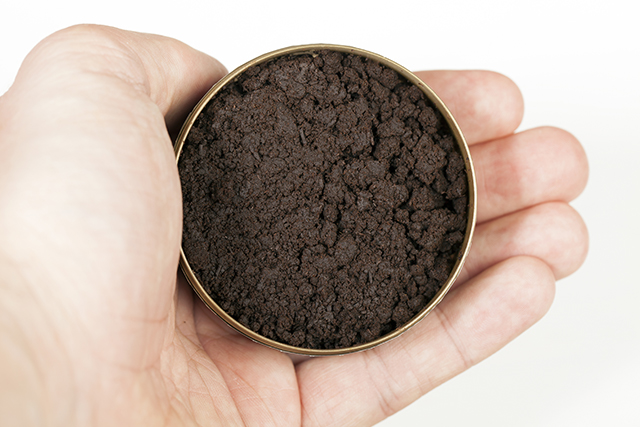Many people think using smokeless tobacco is safer than smoking. Just because there’s no smoke, doesn’t mean it’s safe, the American Cancer Society says.
A person who uses 8 to 10 dips or chews a day receives the same amount of nicotine as a heavy smoker who smokes 30 to 40 cigarettes a day.
Spit tobacco is placed inside the mouth, which gives the user a constant high from the nicotine. It’s made with a mixture of tobacco, nicotine, sweeteners, abrasives, salts and chemicals. It contains more than 3,000 chemicals, including 28 known carcinogens.
The most harmful carcinogens in smokeless tobacco are substances called tobacco-specific nitrosamines (TSNAs), the National Cancer Institute says. TSNAs are formed during the growing, curing, fermenting, and aging of tobacco. The amount of these substances in smokeless tobacco can be very high.
Other chemicals
These are some of the other harmful chemicals in smokeless tobacco:
- Polonium 210 (a rare, naturally occurring element; some polonium 210 comes from radioactive fallout)
- Lead 210 (a radioactive isotope of lead)
- Cadmium (used in rechargeable nickel-cadmium batteries)
- Cyanide
- Arsenic
- Polycyclic aromatic hydrocarbons
- Benzene
- Lead
Spit tobacco is sold in 3 forms:
1. Chew. A leafy form of tobacco sold in pouches. Users keep the chew between the cheek and gums for several hours at a time.
2. Plug. Chew tobacco that has been pressed into a brick.
3. Snuff. A powdered, moist form of tobacco sold in tins. Users put the snuff between the lower lip or cheek and the gum. People also sniff it. Using snuff also is called “dipping.”
Health effects
Smokeless tobacco, like cigarettes and other forms of tobacco, is addictive. The nicotine in tobacco is mostly responsible for the addiction. A person using smokeless tobacco gets 3 to 4 times the amount of nicotine as that in a cigarette. The nicotine in smokeless tobacco is absorbed by the body more slowly than in smoking, but it remains in the body longer.
Like cigarettes, smokeless tobacco affects the cardiovascular system and can cause heart disease, stroke, high blood pressure and cancer of the lip, tongue, cheek, throat, stomach, and esophagus.
Other results from using smokeless tobacco include cracking and bleeding lips and gums, precancerous mouth sores called oral leukoplakia, tooth abrasion, gum recession, gum and tooth disease, loss of teeth and bone in the jaw, and chronic bad breath.
How to quit
Quitting smokeless tobacco is hard, but it can be done. To break the habit:
- Ask your health care provider where you can get support in your effort to quit.
- Think about nicotine replacement products like nicotine gum or a patch.
- Try using substitutes like tobacco-free mint-leaf snuff, sugarless gum, hard candy, beef jerky, sunflower seeds, shredded coconut, raisins, or dried fruit.
- Make a list of all the reasons you want to quit. Keep it with you and look at it often.
- Get involved in healthier activities like lifting weights, shooting baskets, or swimming
If you want to quit smoking or using smokeless tobacco; or would like more information, click here.

